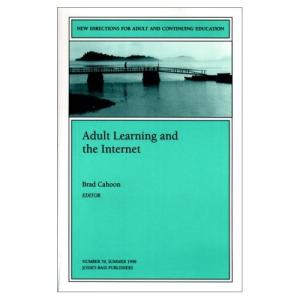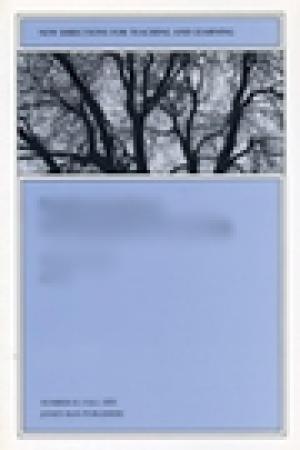Resources

More than thirty-six million people in the United States are already using the Internet, and many more will join them in the years to come. Tools such as e-mail, Web browsers, and on-line conferencing present exciting opportunities for both adult learners and their instructors. The purpose of this volume of New Directions for Adult and Continuing Education is to explore the effects of the Internet on adult learning--both as that learning is facilitated through formal instruction and as it occurs spontaneously in the experiences of individuals and groups--and to provide guidance to adult and continuing educators searching for ways to use the Internet more effectively in their practice. Taken as a whole, the sourcebook provides a thorough survey of the research literature. The chapters also reflect the hard-won personal experiences of the authors, all of whom are directly involved in the use of Internet technologies to facilitate adult learning. This is the 78th issue of the quarterly journal New Directions for Adult and Continuing Education. (From the Publisher)
A 1996 article commissioned by Lilly Endowment Inc. and Auburn Theological Seminary. reflecting on the significance of information technology in seminary education.
Provides information on the availability of data on teaching, learning and technology. Details on the study questions posed by the Rensselaer Polytechnic Institute which focused on results; Role of technology in the quality and cost of lower-division composition courses of the Indiana University-Purdue University Indianapolis (IUPUI); Disadvantages of the IUPUI composition students; Effect of technology use on costs.
This paper discusses how the growth of technology and its impact on our communication paradigm requires a deconstruction of power and authority in the classroom. It exposes the ways in which faculty expertise in content in a technological environment, that is, being the most skilled and competent computer user in the classroom, negatively informs our understanding of classroom authority and teaching success. It argues that a creative problem-solving process is a more useful measure of successful teaching and calls for flexible pedagogies that focus on community-building while maintaining clear conceptual and theoretical frameworks. This paper also provides a case study of the author's approach to altering classroom authority by examining, for example, such practices as teaching multiple courses concurrently, eliciting student voice, discussing course pedagogy in the classroom, involving students in decision-making about grading and deadlines, giving students peer teaching responsibilities, and focusing on consensus as the classroom decision-making process.

New instructional programs and services involving technology are being established which have significant implications for the way teaching and learning will be conducted in the future. This volume contains 10 papers which examine some of the current trends in instructional technology in higher education and discuss implications for teaching and learning in the postsecondary setting. (From the Publisher)